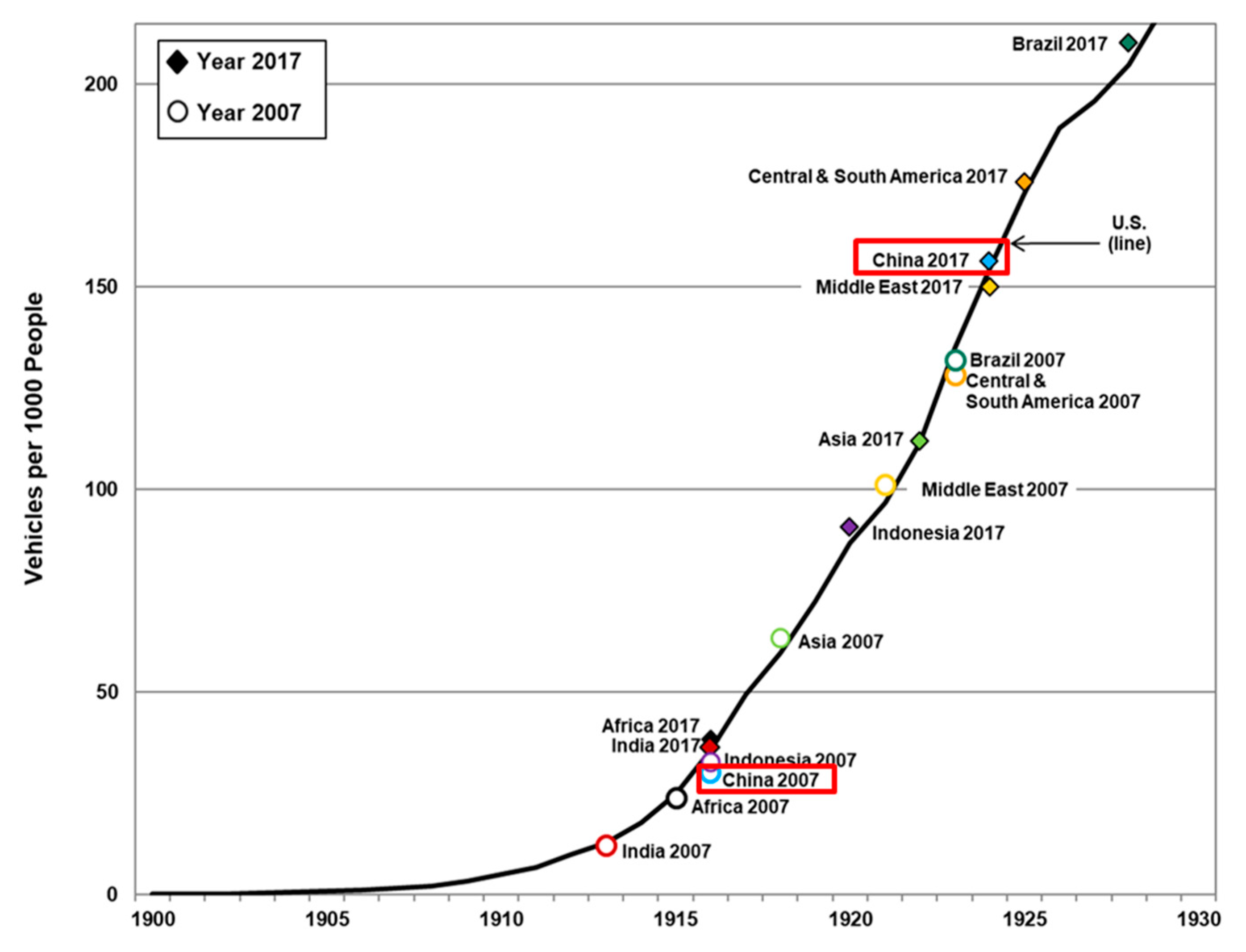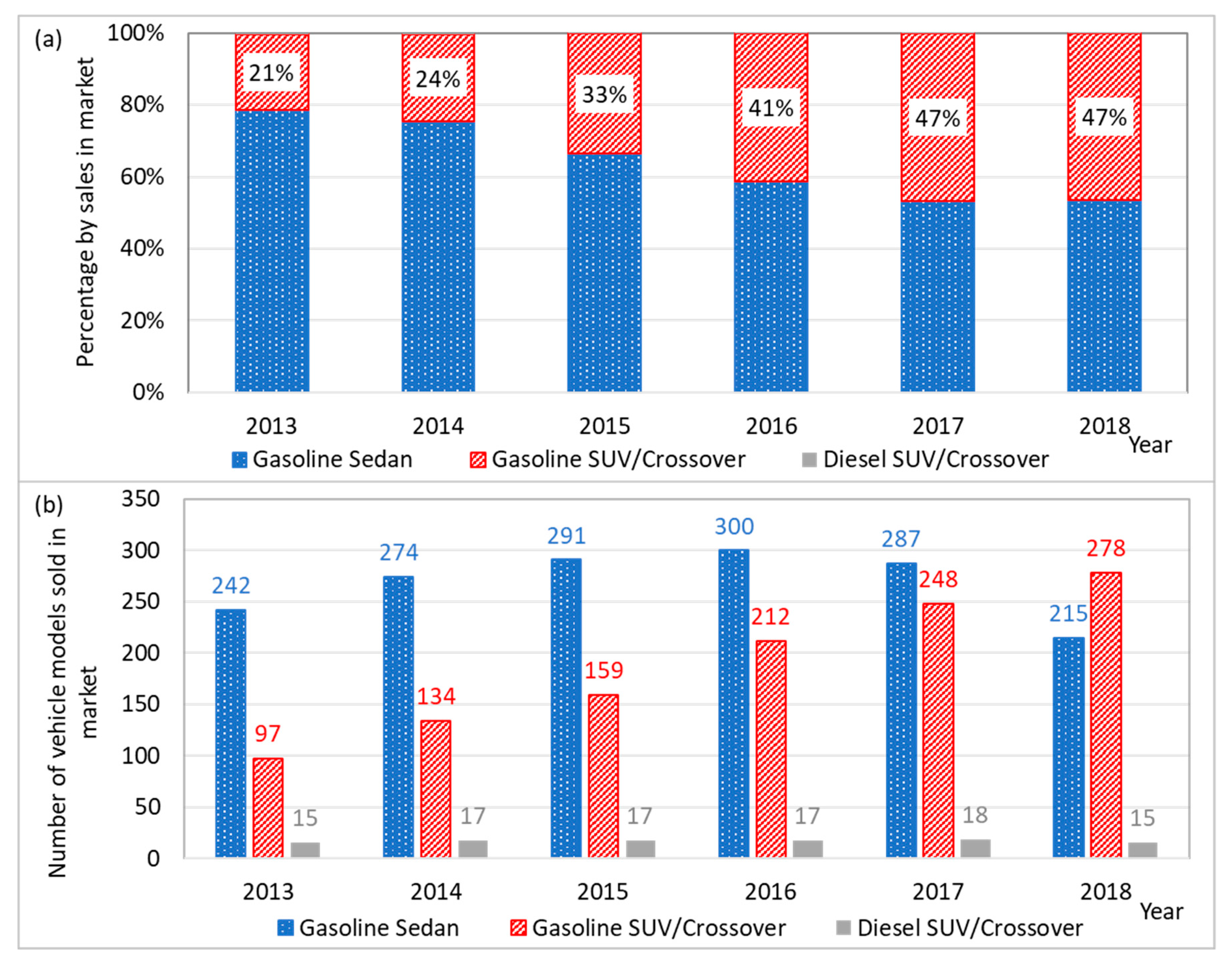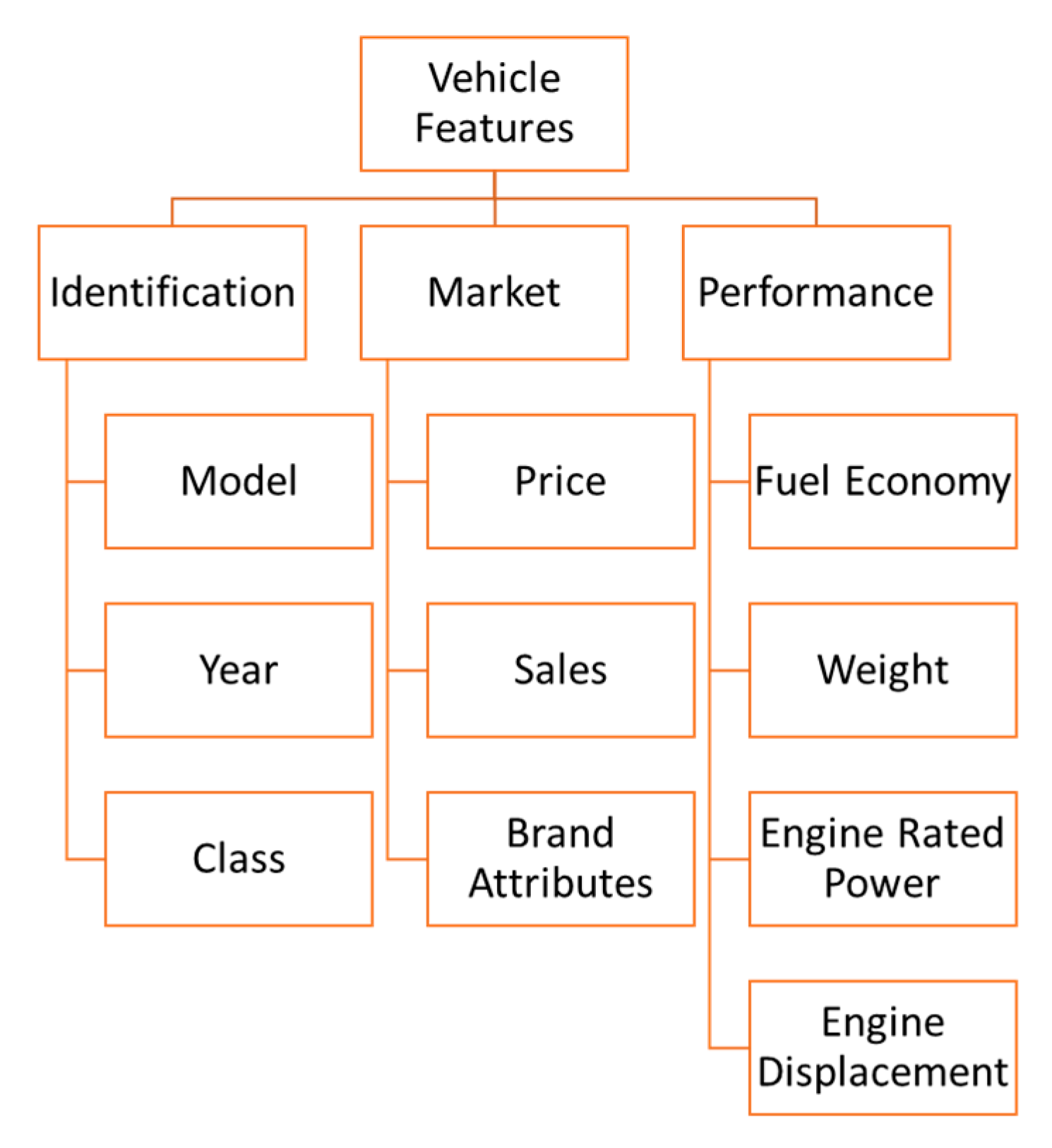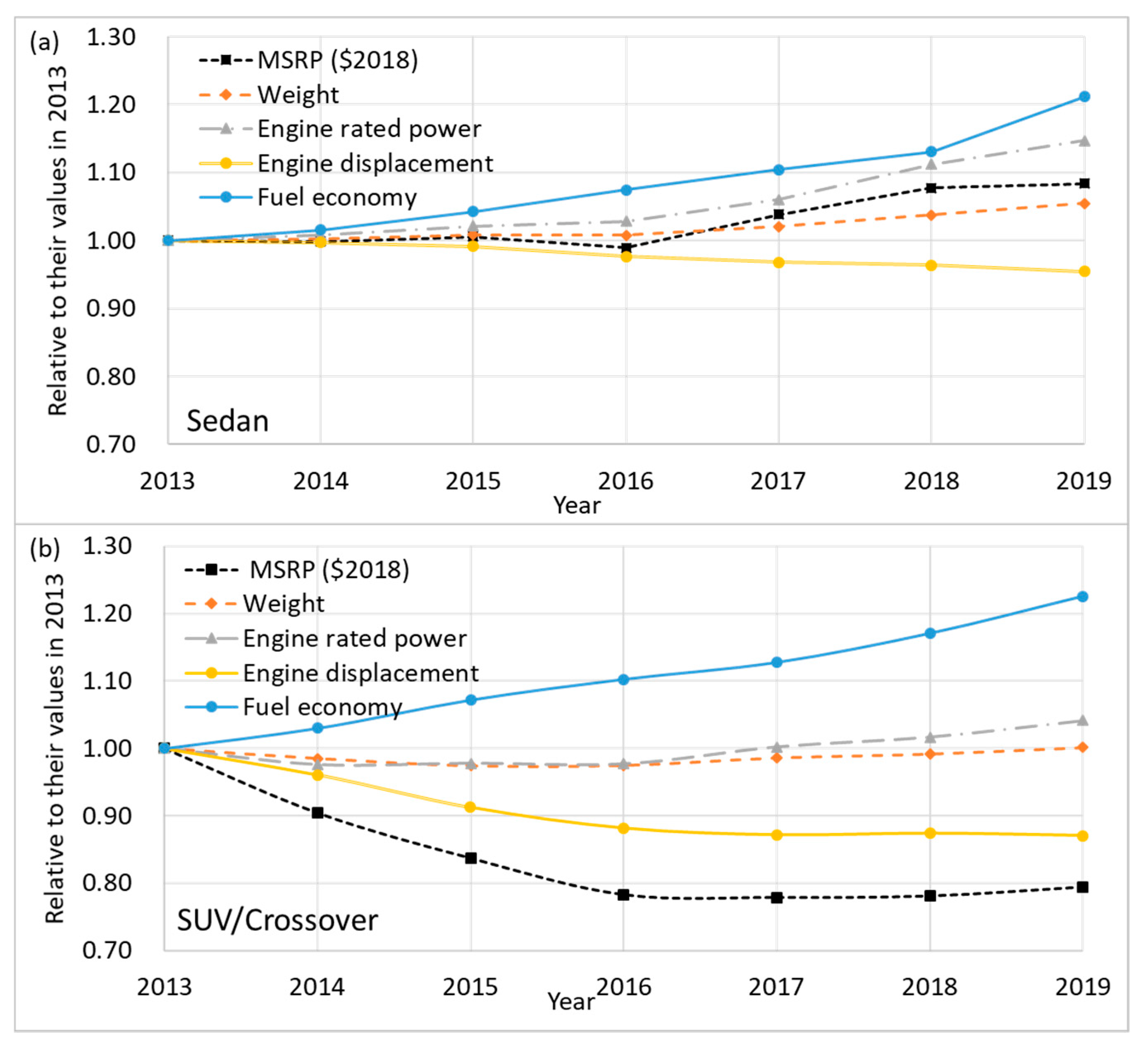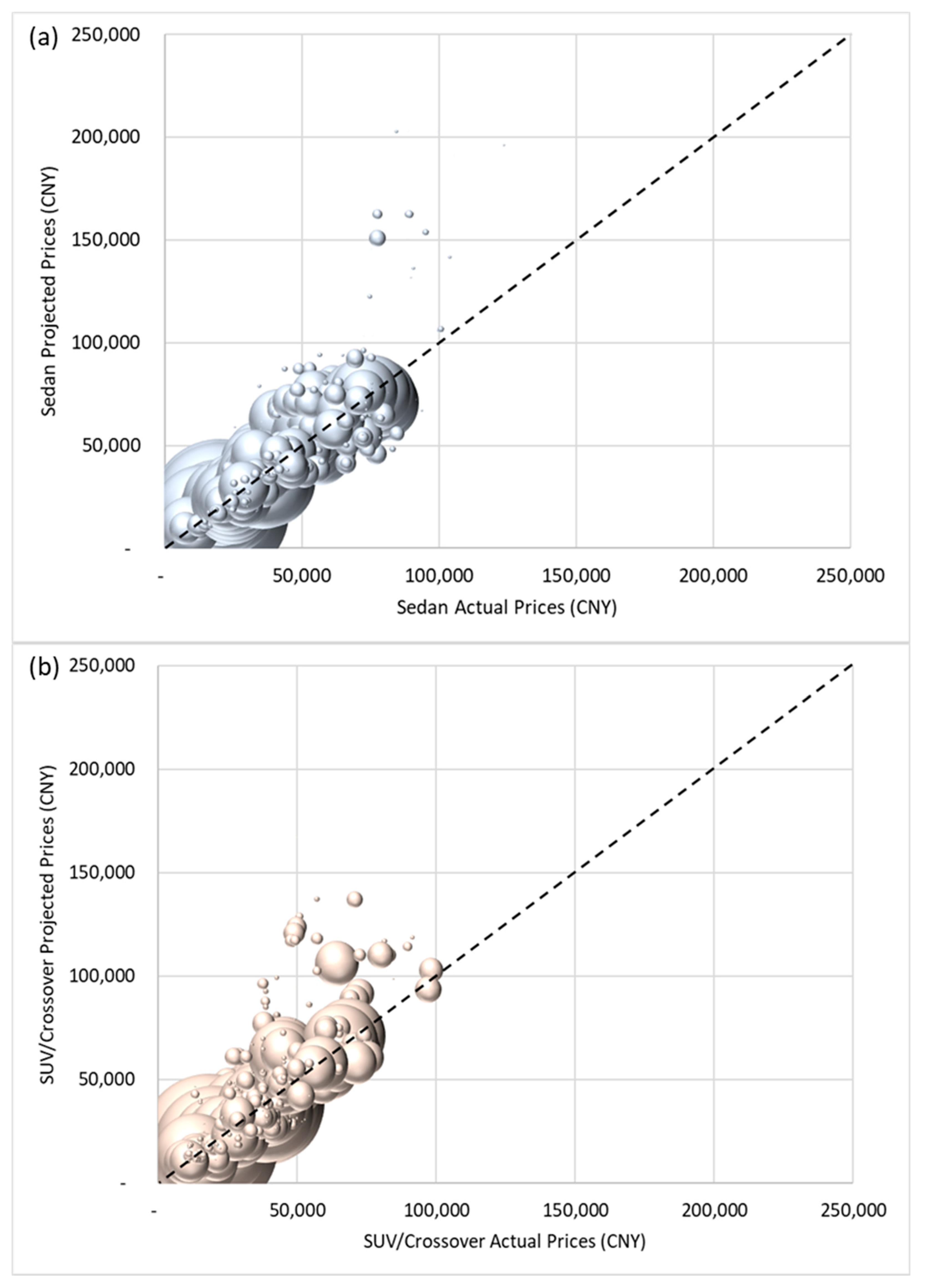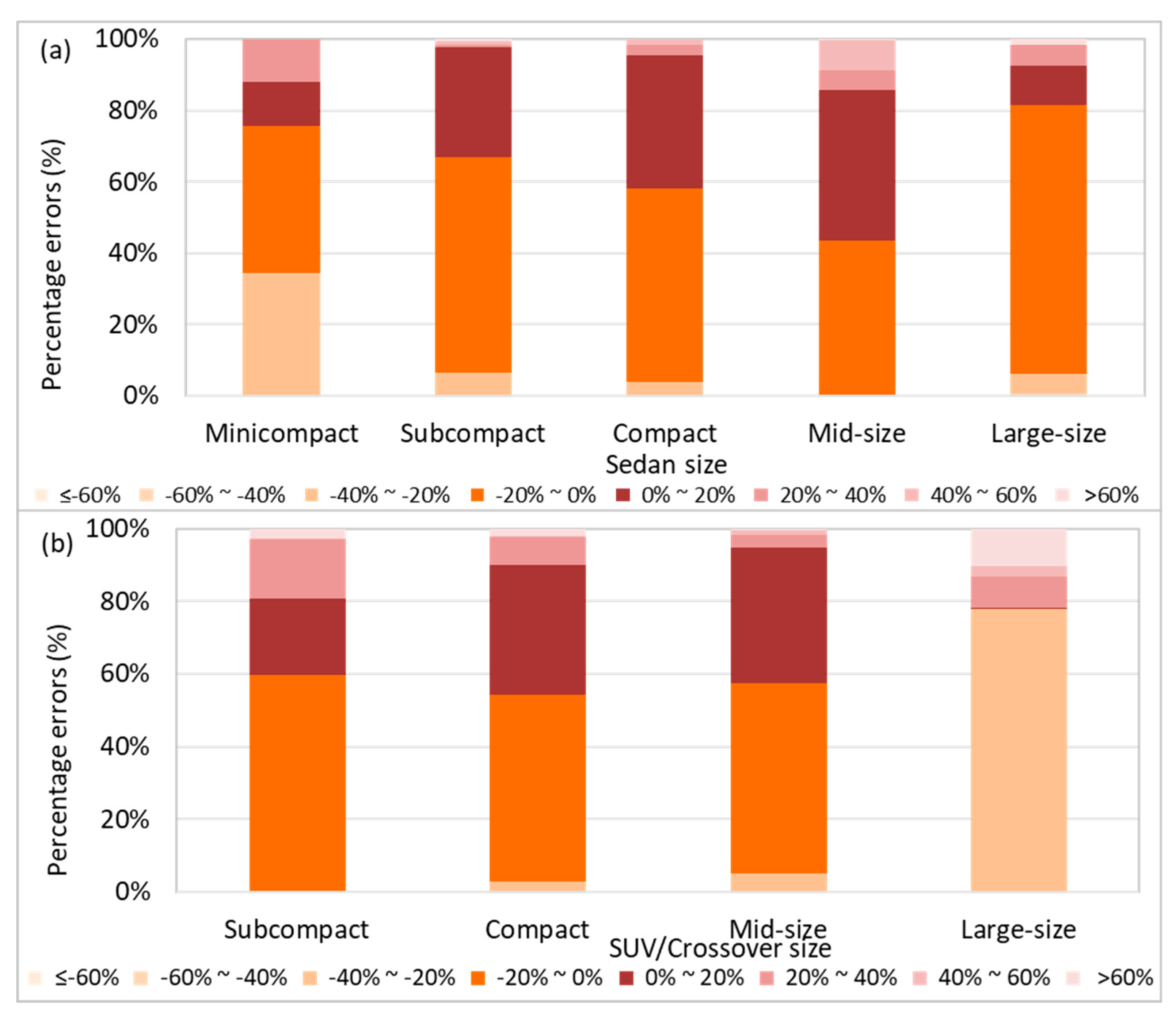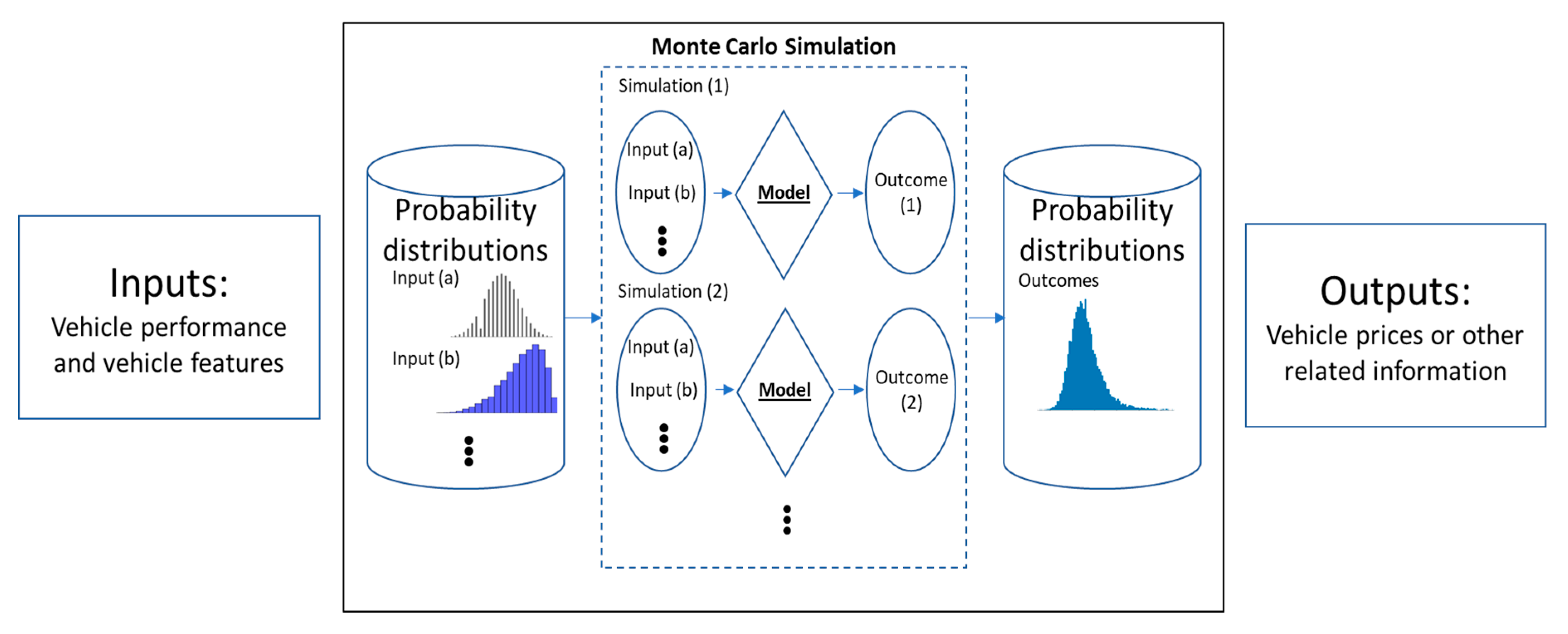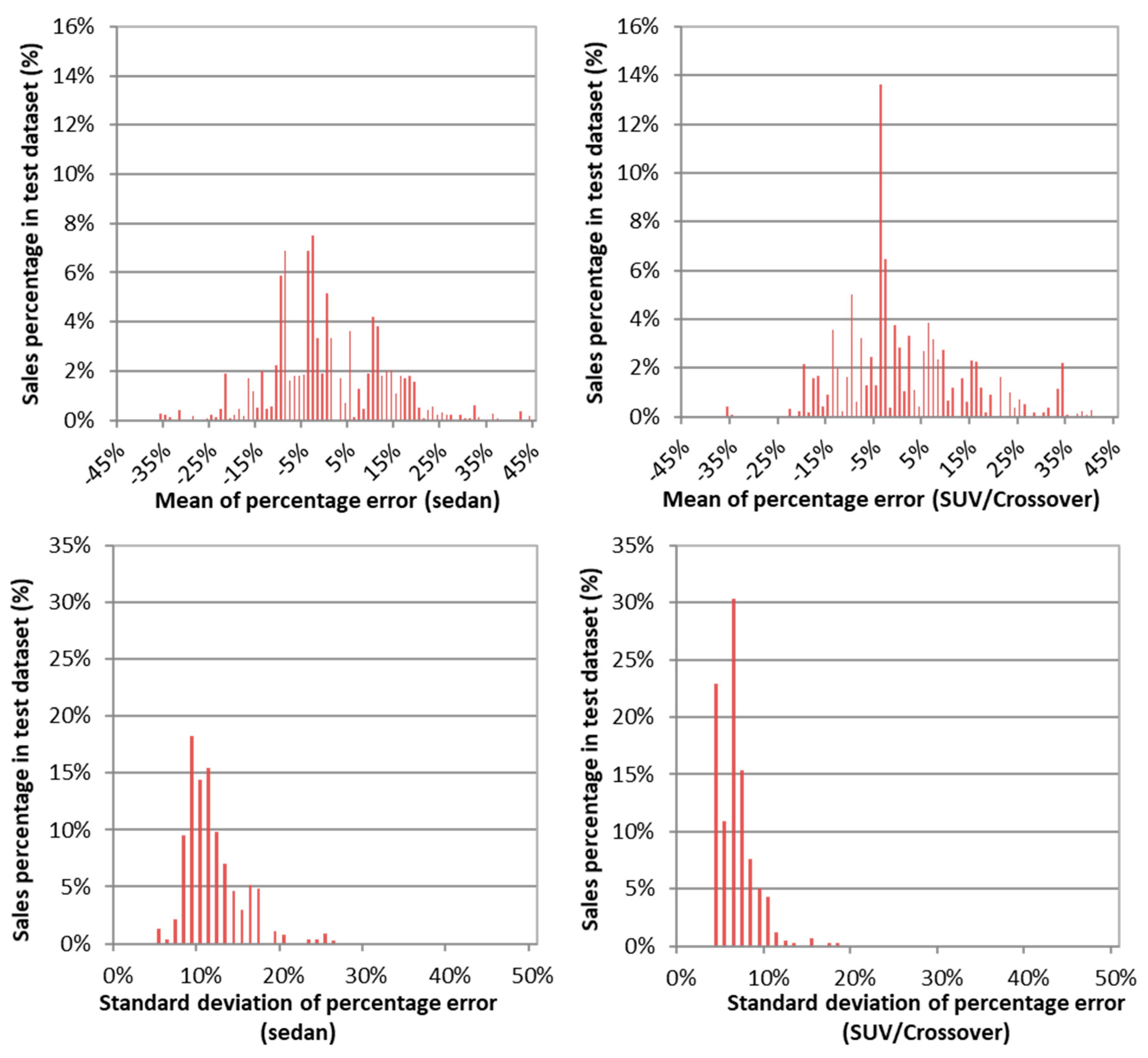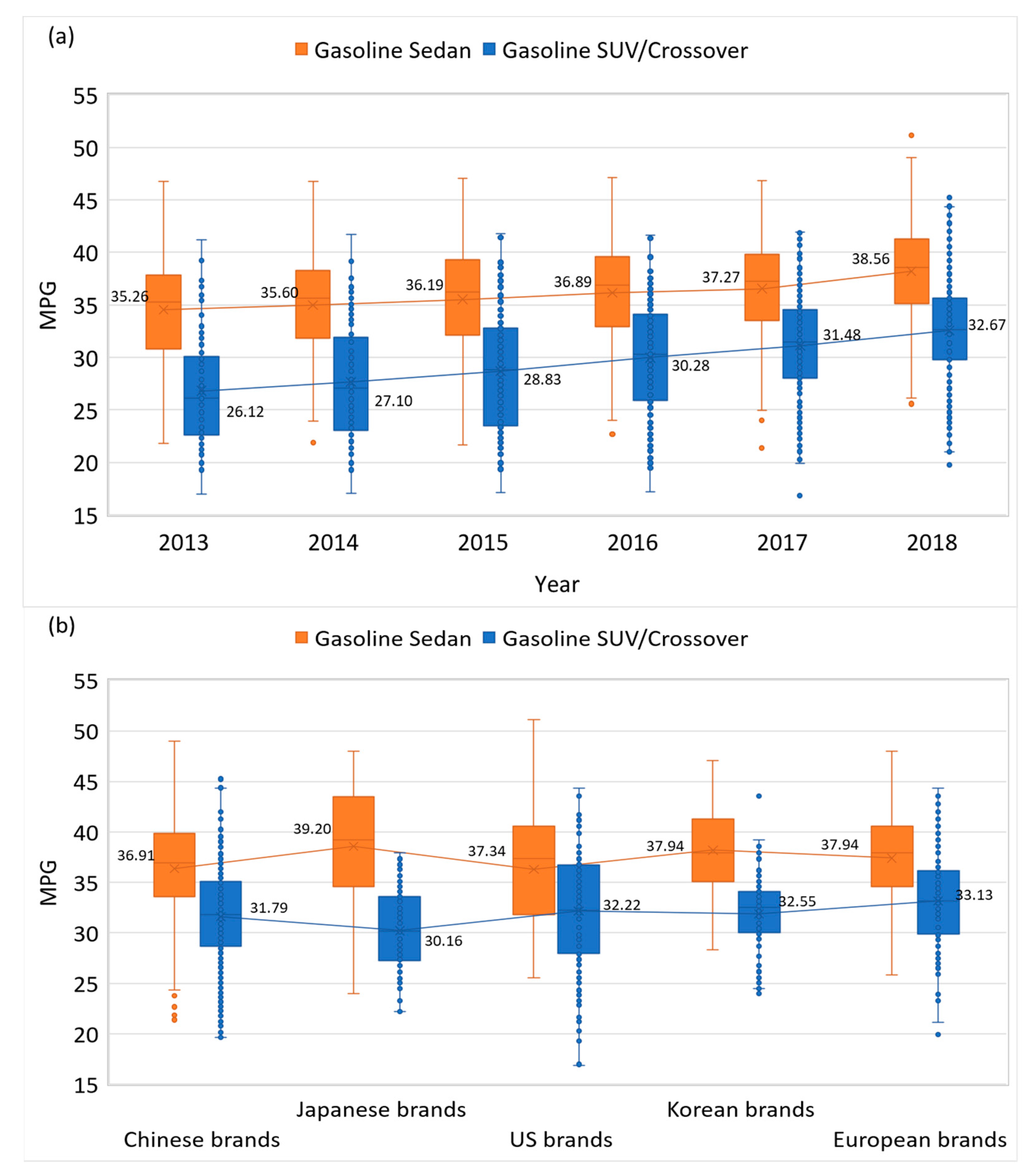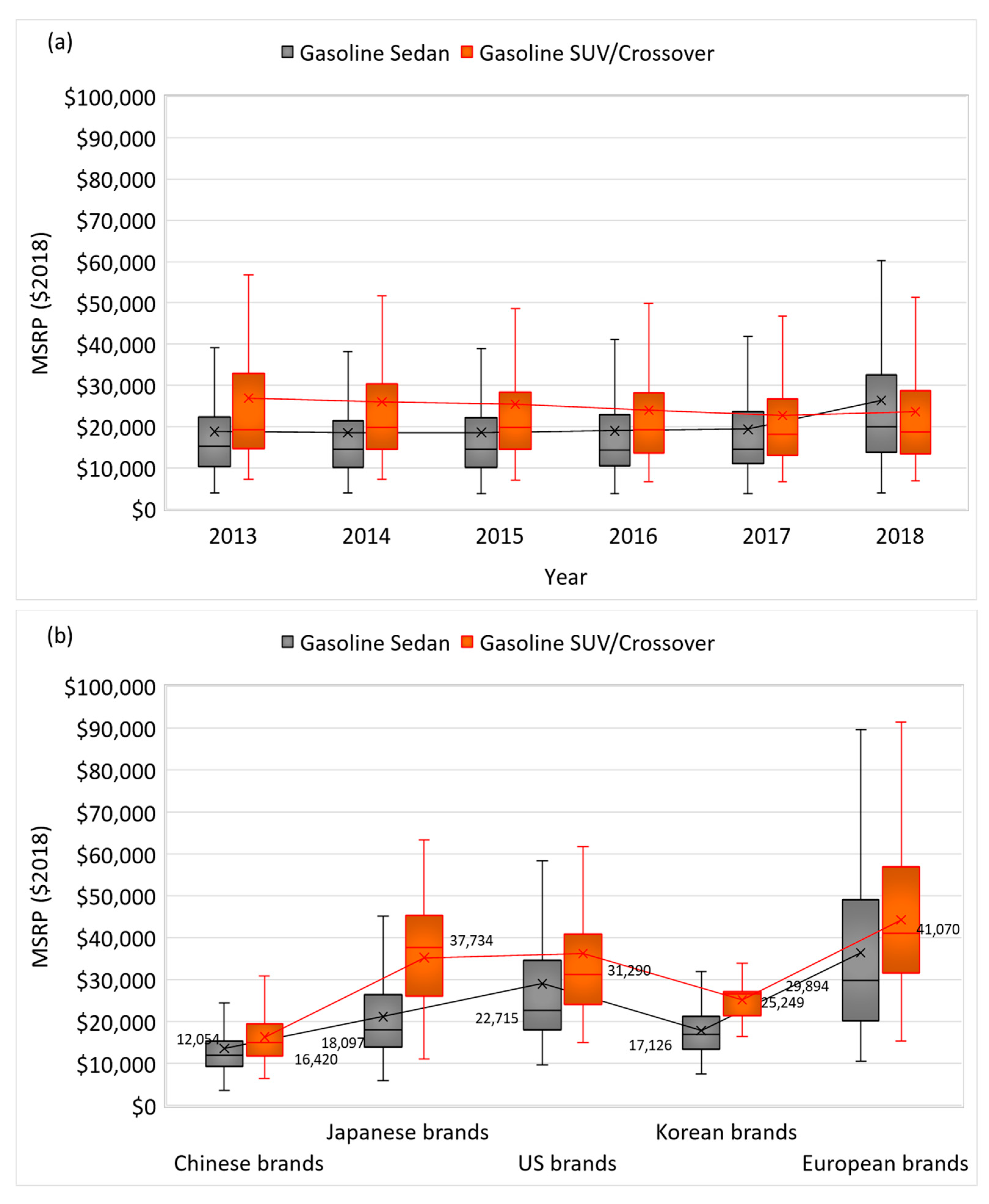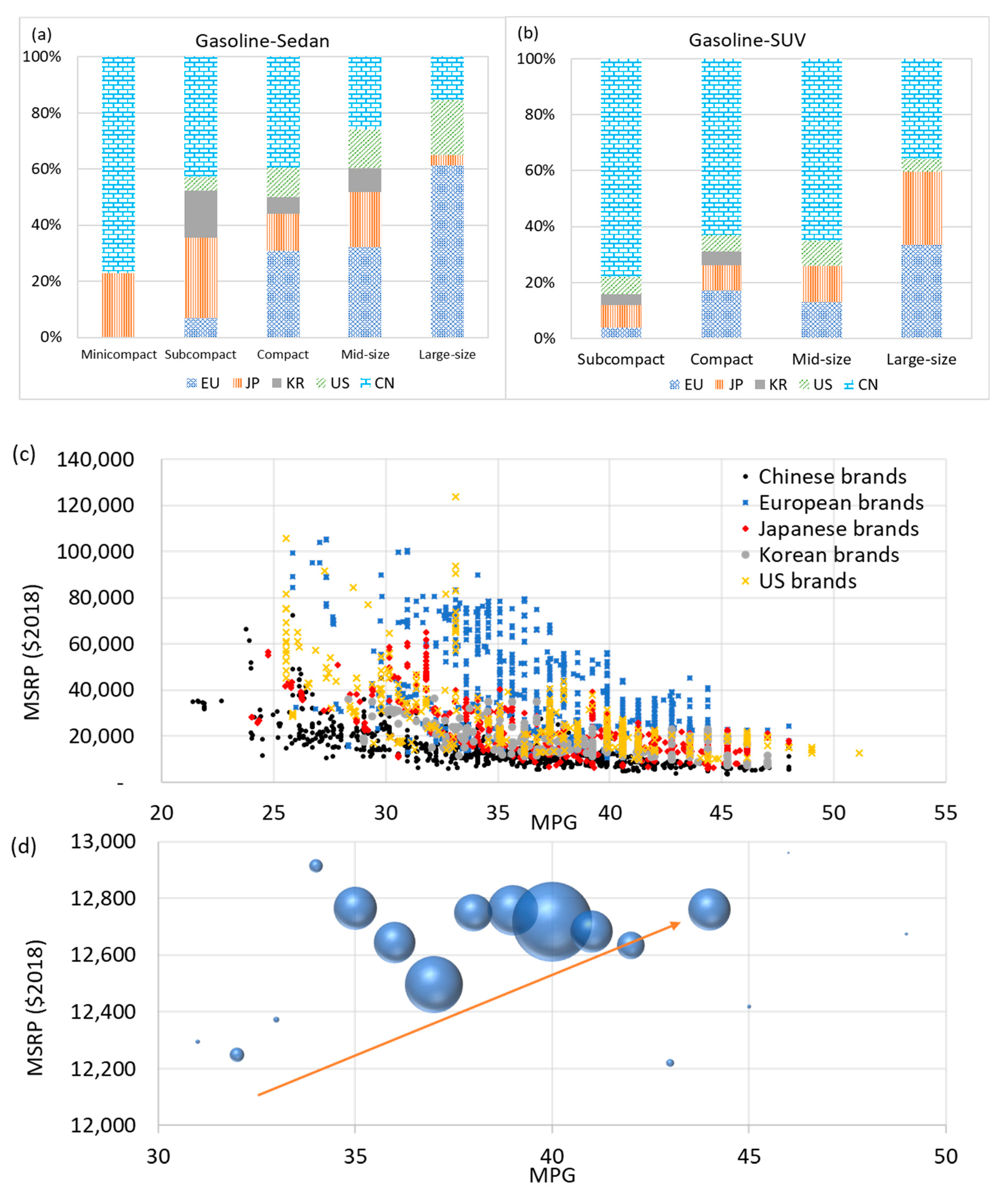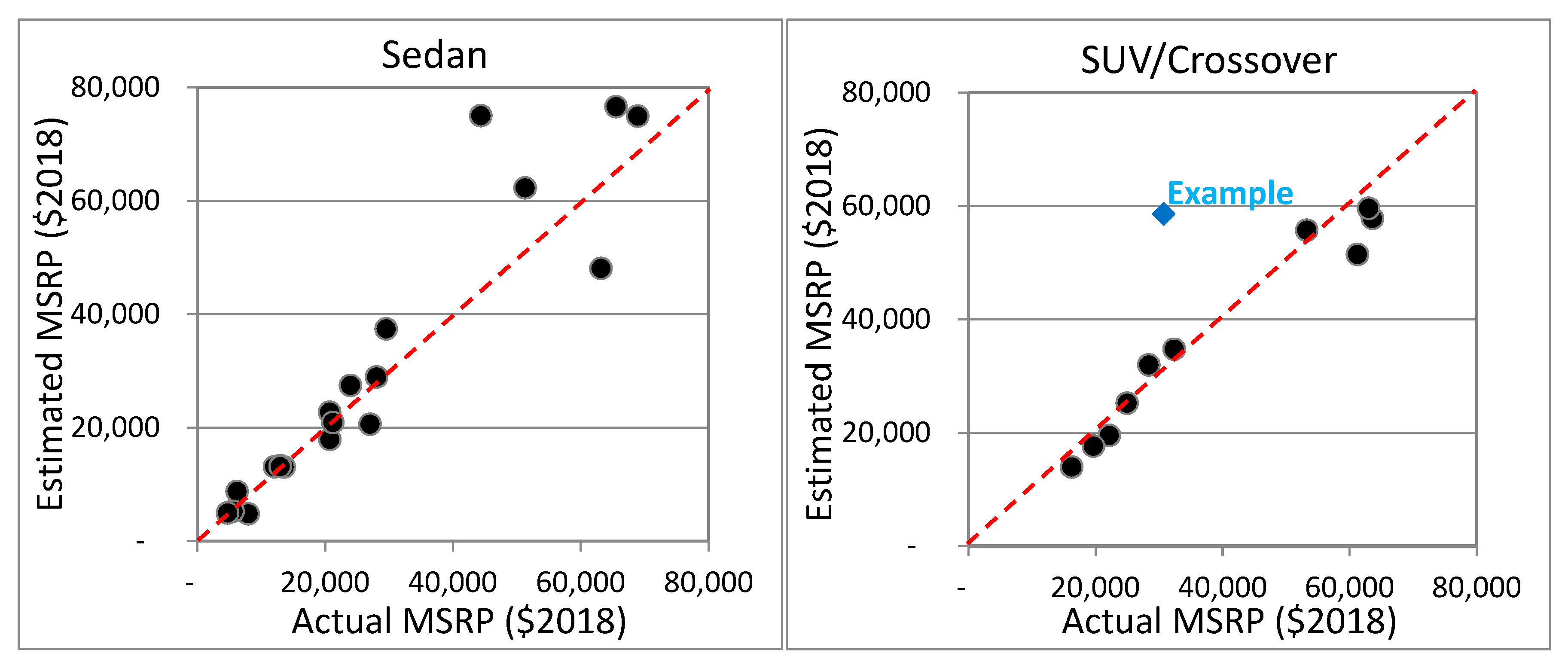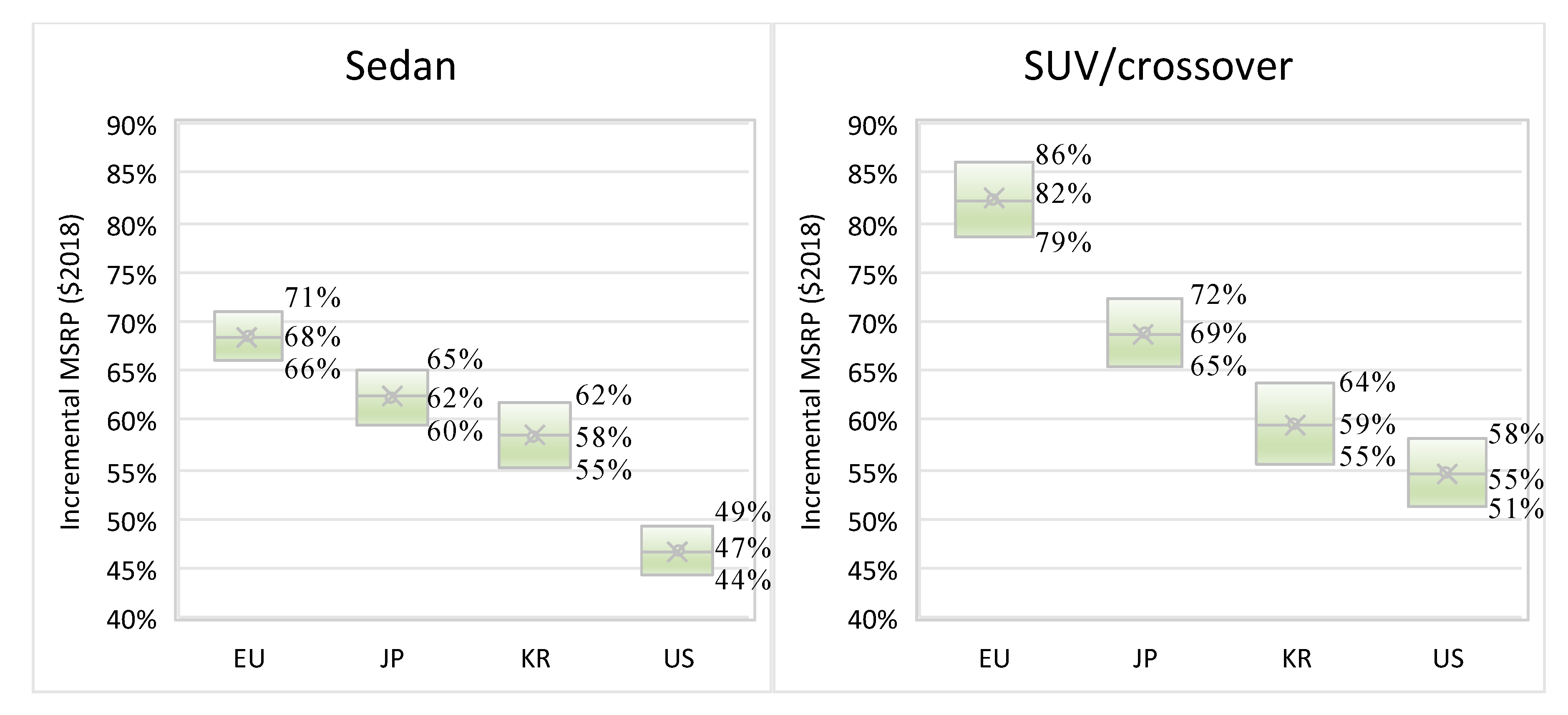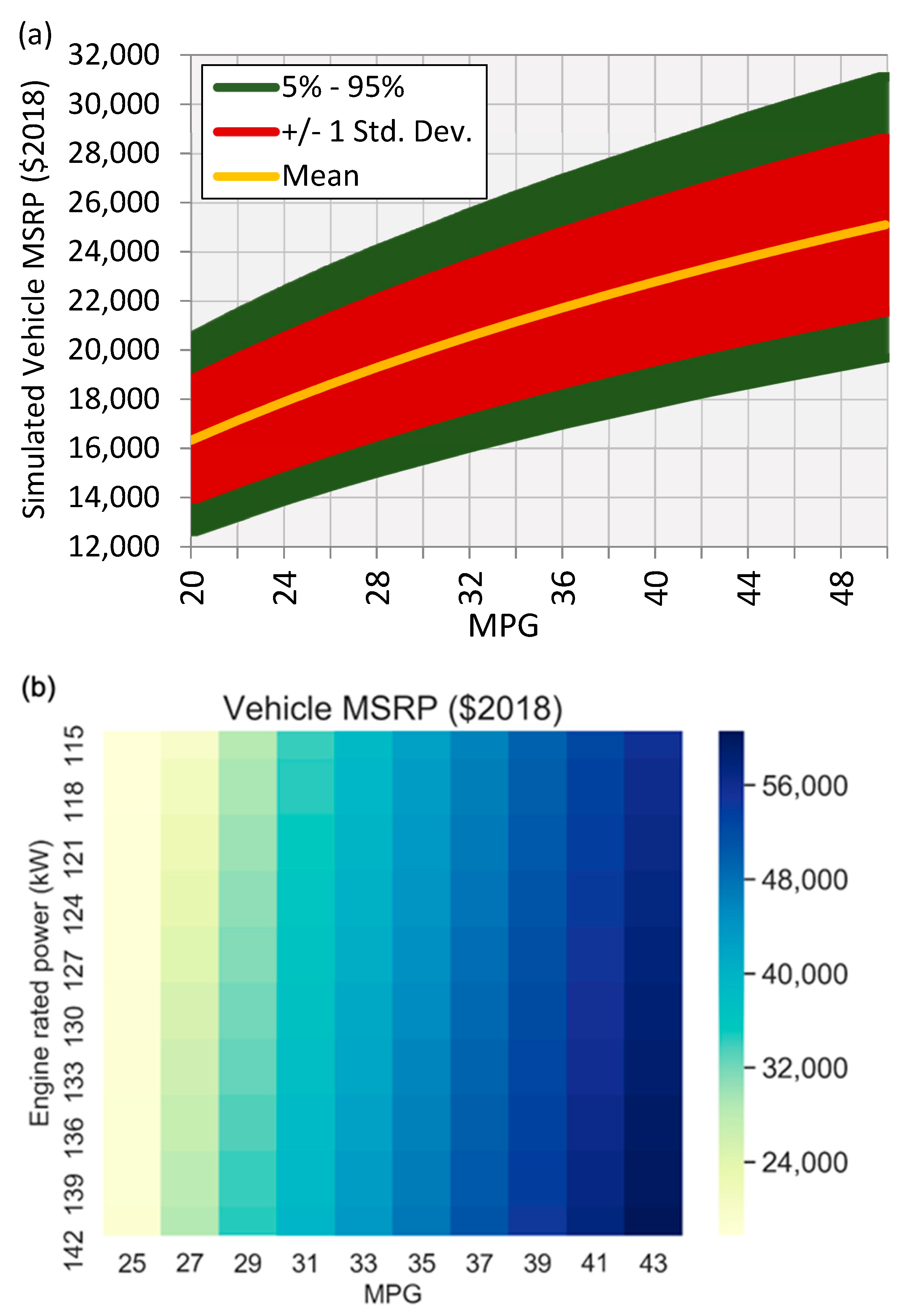1. Introduction
Rapid wealth accumulation in China and the enormous growth of the Chinese middle class are transforming the Chinese vehicle market [
1]. According to the China Automotive Technology and Research Center (CATARC), the total motor vehicle stock in China reached 348 million by the end of 2019, and the passenger vehicle population increased to around 201 million units [
2]. Though, as a developing country, China has grown to be one of the largest passenger vehicle markets in the world [
3], and the market dynamics is closely watched upon by the stakeholders in the world. On one hand, the sustainability of the vehicle market seems to be temporarily frustrated by the trade war and the slowdown of Chinese economics during 2018 and 2019 [
4]. On the other hand, because of the growing spending power of the massive middle class in China, along with the country’s resilient manufacturing industry and healthy market dynamics, people still believe that, in the long term, the prosperity of the vehicle market will continue after a transitory period of adjustment [
5]. CATARC researchers have projected that the auto industry will generally recover after 2020 and that the annual vehicle sales will increase significantly by 2024 after the downturn [
6]. Studies also anticipate that, by 2050, the vehicle stock in China will increase to approximately 400–700 million [
7,
8].
The level of vehicle ownership (the vehicle volume per one thousand people) in China is still small, compared to developed countries [
9]. As shown in
Figure 1, the vehicle volume per one thousand people in China was just over 150 in 2017, equivalent to the U.S. level in the 1920s [
10]. Japan, a neighboring country that is similar in terms of culture and urban population density, owned more than 600 motor vehicles per thousand people by 2018. Therefore, if the economy improves and the purchasing capacity of the middle class increases steadily, vehicle motorization should quickly occur across all regions in China, not just in the prosperous coastal areas [
9]. Furthermore, the Chinese vehicle market is transitioning from a market of majority first-time buyers to a market that is more diversified and more focused on aftermarket services [
11]. The used vehicle market is burgeoning as well [
12].
In 2018–2020, the industry was experiencing an adjustment, and sales growth slowed. However, it is still regarded as a must-win market by investors, and it attracts a significant amount of capital [
13]. Tesla’s Shanghai factory kicked off production in the end of 2019 after just ten months of construction [
14]. GM expanded its research center in China with a team of highly-qualified designers, scientists, and engineers in order to respond to consumer demands more efficiently by closely embracing local markets and manufacturing partners [
15]. At the same time, the vehicle industry, viewed by the Chinese government as a strategic manufacturing industry, will be more open to foreign investors [
16]. The government has announced that, by 2020, the investment restrictions regarding foreign ownership in both passenger and commercial vehicle manufacturing companies will be fully removed [
17].
Meanwhile, the explosive growth of the vehicle market in China has inevitably raised issues related to the economy, energy security, air pollution, and urban planning [
1,
9]. China has been one of the worlds’ largest CO
2 emitters and one of the largest oil importers [
18]. Road traffic accounts for about 70% of the energy consumed by the transportation sector [
18,
19]. Therefore, the Chinese government is attempting to divert the vehicle market to a more fuel-efficient and electrified pathway via government stimulus incentives, fuel economy policies, and other measures [
3]. In 2017, the Chinese government released a vehicle policy, “Passenger Cars Corporate Average Fuel Consumption and New Energy Vehicle Credit Regulation,” to urge the auto companies to produce highly fuel-efficient conventional vehicles or electric vehicles to achieve the stricter fuel economy standards [
20].
Regardless of the specific goals of industry and the government, all of these endeavors require an understanding of the preferences of China’s car buyers, especially in terms of vehicle price and features. In order to maximize profits and survive under furious market competition, auto companies need to quickly adjust their vehicle characteristics to meet consumer needs at acceptable price points. Hence, it is important for economists and market analysts to develop quantitative models or analyze market data to quickly identify emerging consumer-side market trends. Chen et al. created a mixed oligopolistic differentiated products model to investigate gaming between the supply side and the demand side, as well as gaming among different automakers [
21]. This model reveals the relationships between incremental costs and technology-related vehicle characteristics, such as fuel efficiency and horsepower, by different types of automakers. Studies have shown that incremental prices by vehicle technology and by vehicle brand are important inputs in discrete choice models, which rely heavily on consumer preferences regarding various vehicle types [
22,
23]. Typically, the relationship between vehicle pricing and vehicle intrinsic/extrinsic features are quantified through data survey, data review, or expert assessment [
24,
25]. For example, the National Research Council uses data review and expert assessment to quantify the relationship between fuel economy and manufacturing cost and projects’ incremental costs for further improving vehicle fuel economy by 2017, 2020, and 2025 [
24]. Xie et al. conducted analyses based on a large number of regulatory and industrial documents to estimate the corresponding incremental costs associated with fuel-efficient technologies [
25]. Huo et al. estimated the relationship between vehicle fuel consumption rate and vehicle weight among passenger vehicles as well as commercial vehicles [
26].
Because of the strong spending power of the Chinese middle class, the more expensive premium passenger vehicle market continues to grow despite a general downturn in the vehicle market. According to Gasgoo, most premium auto brands, such as Mercedes-Benz, Audi, and BMW, experienced a growth in sales in the first half of 2019, compared to the same period in last year [
27]. Car buyers have distinct purchase preferences and attitudes regarding vehicle brands, which becomes clear when examining which vehicles did not sell well in 2019. Local Chinese brands seem to be regarded as cheap, low-quality products, even though those automakers are improving their brands with attractive designs [
28], sophisticated powertrain components (both fuel-powered and electrified), and innovative electronic interfaces [
29,
30]. Even if the vehicle prices are the same, profit margins can vary among car brands due to differences in the supply chain, manufacturing techniques, and cost controls. Also, Chen et al. found that, for the vehicles that are made in the joint ventures in China, the incremental costs of fuel efficiency and of alternative vehicles tend to be lower in joint ventures with Japanese firms, while the incremental costs of horsepower tend to be lower in joint ventures with U.S. firms [
21]. According to our literature review, no publications have discussed the incremental price of vehicle features such as fuel efficiency or horsepower among different car brands in the Chinese vehicle market, and no studies have systematically quantified the possible relative values among the vehicle brands through data analysis.
This study applies statistical methodologies and uses historical market data to quantify the relationships between vehicle prices and features in the Chinese vehicle market in the 2010s. It has three primary objectives:
Estimate the price range of a vehicle based on its intrinsic/extrinsic features and performance;
Identify the brand premium of vehicles (domestic product, join-venture product, and imported product);
Investigate the relationship between incremental vehicle prices and fuel economy (or fuel consumption rate).
By collaborating with CATARC, this study collected sales records and key powertrain information for all vehicle makes and models from 2013 to 2019 for the analyses. The following questions were addressed in this study:
How do we quantify the relationship between vehicle price and vehicle features through big data analysis of historical data?
Among the investigated intrinsic and extrinsic features in vehicles, which ones have the greatest impact on vehicle prices?
For vehicles sold in China, what are the price premiums of vehicle brands from different countries/regions in recent years?
What is the relationship between vehicle price and vehicle fuel economy (or fuel consumption rate) in the Chinese market in recent years?
This paper consists of five sections. The first section presents the motivations for and objectives of this study and discusses background literature on the passenger vehicle market and recent trends in China. The second section presents the data collection and processing efforts. The third section describes and compares the methodologies used to quantify the relationships among vehicle features. The fourth section discusses the vehicle feature analyses. The last section summarizes this study. This paper focuses only on the passenger vehicle segment, which is the dominant part of the market, so all the “vehicles” mentioned in the following context are referred to the passenger vehicles. In addition, a yearly average currency exchange rate of
$ 1.0 USD = 6.620 CNY in 2018 is used in this paper [
31].
5. Conclusions
The goal of this paper is to quantitatively evaluate the historical vehicle market in China (2013–2019) and to determine the relationships among vehicle prices and features through statistical modeling. By collaborating with researchers from CATARC, we collect passenger vehicle sales data from 2013 to 2019, and data for more than 100 million vehicle sales are adopted for the modeling analyses. The market data from 2013 to 2018 are used for model training and in-sample testing, while market data from 2019 are adopted for out-of-sample estimation and validation. After comparing the stabilities and accuracies of different statistical methodologies, this study creates a linear multinomial regression model that uses dummy variables to project vehicle MSRP, based on specific vehicle features (engine rated power, engine size, fuel economy, and vehicle weight) and categories (brand origin, vehicle size class, vehicle segment [sedan or SUV/crossover], and luxury/non-luxury vehicle). The study also uses Monte Carlo simulation to quantify the possible distributions of the vehicle MSRPs by assuming vehicle feature ranges based on their historical distribution. This study may contribute valuable information to researchers and policy makers in surveying vehicle pricing and vehicle technology trends, analyzing the impacts on fuel economy and engine power in the passenger vehicle market, and evaluating the market penetration of highly fuel-efficient vehicles in China.
The results of this study offer several insights that may be of interest to stakeholders involved with the Chinese passenger vehicle and energy market:
The SUV/crossover is the predominant vehicle type in the Chinese passenger vehicle market. The number of small SUVs/crossovers in the market is expected to increase, and their prices are decreasing until they are in line with sedan prices. The major vehicle performance features of SUVs/crossovers are nearing those of sedans.
The fuel economy of sedan and SUV/crossover models sold in China has increased annually from 2013 to 2018. However, it has increased more rapidly for SUVs/crossovers than for sedans. Sedan fuel economy increased from 35.26 to 38.56 MPG, and SUV/crossover fuel economy increased from 26.12 to 32.67 MPG.
Comparing the fuel economy performance among vehicle models by brand origin, on average, Japanese brands perform the best among sedans, while they perform the worst among SUVs/crossovers.
When all other vehicle features are the same, Chinese sedans are priced lower than sedans from the other countries/regions in this study. European, Japanese, Korean, American sedans are priced 68%, 62%, 58%, and 47% higher, respectively.
When all other vehicle features are the same, the MSRP of European SUVs is 82% higher than that of Chinese SUVs/crossovers. Japanese, Korean, and American SUVs/crossovers are priced 69%, 59%, and 55% higher, respectively.
In 2013–2019, the incremental MSRP per MPG is about $200 to $250 per MPG for sedans and about $80 to $130 per MPG for SUVs/crossovers.
Vehicles became much more fuel efficient from 2013 to 2019, but incremental MSRP per MPG-engine rated power did not change much. It ranged from $2.10 to $2.20 per MPG-kW for sedans and from $0.80 to $1.10 per MPG-kW for SUVs/crossovers.
This study uses statistical modeling to perform data analyses of the Chinese passenger vehicle market. The methods and conclusions of this study can be used for vehicle ownership and consumer purchase preference analyses by others. Some assumptions are made to simplify the analysis process: only the major vehicle features are considered; only the gasoline sedan segment and the gasoline SUV/crossover segment are considered; and vehicle brands are classified according to their regional areas instead of by their brand names. As more is learned about the data and the methodology, the analysis will be updated and improved.
